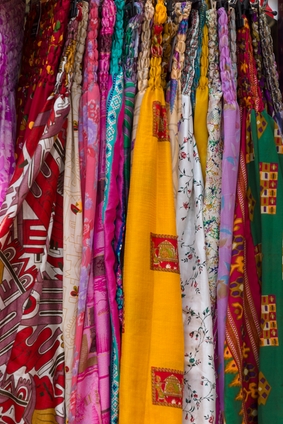
Nothing is worse than having a vision for a new piece of clothing or throw pillow and not being able to find the right textile to replicate it. Did you know that it’s possible to make your own textile design from scratch? Technology has made it simple and possible to make even your most creative textile designs a reality with a simple click. When the process of following our artistic endeavors to an original creation needs an extra step in creativity online textile design sites can fill the void and turn ideas into realities. If online isn’t quite your comfort zone there are easy and affordable hands on design techniques. Learn more about the options that best fit your personal style and how to execute them.
Online Textile Design

Designing textiles is as easy as point and click! One of the latest trends in creating fabric textiles is doing it virtually. How does it work? Simply design a graphic or upload an image to a chosen textile design site like Spoonflower, select a type of fabric, layout, reference colors—and purchase. The company will create and ship your fabric design to you. Depending on the type of image or graphic you’re using and the company your working through, be sure to research the correct file and pigment type and resolution—from curtains, skirts and chair covers, your boundaries are limitless. If this is something that really interests you check out fashion school expert blogs and even degree programs to help sharpen your textile design skills. It’s never been easier!
Shibori
According to an article in Sewdaily.com, Shibori is “a technique in which cloth is tightly compressed by tying, clamping, folding and stitching, so that fabric resists paint and reveals wonderful designs and patterns. The Japanese word Shibori comes from the verb root Shiboru meaning ‘to wring, squeeze, or press.'” Shibori is essentially the Japanese version of tie-dye. But, instead of folding materials and using rubber bands to create circular patterns, it is done by using a large rope or long hollow cylinder with open ends and wrapping your material around it. From there, you compress the fabric from both ends towards the middle thereby scrunching it. Use string or rubber bands to secure and to add more indentations for color. Pour on dyes using a cup or bottle and blend the colors the same way you would tie-dye. You can add color to previously colored fabrics to add creative effects or to new white fabrics to create novel designs for your home. Achieving a blended color look by applying all colors at once or an overlapping look by adding one color, letting the fabric dry and continuing adding color this way. The Shibori technique leaves elongated distorted line patterns. Use this fanciful technique for fabrics from clothing, to pillows and chair cushions.
With design techniques for the tech savvy to the traditional crafter, the limits are only as high as you make them. Whether you’re a textile design pro or an amateur just starting out get moving and happy crafting!
About the author:
Willie Bryant studied at a culinary school in Chicago and now does freelance work in the food and entertainment industry. He’s also a (very frustrated) Cubs fan.
